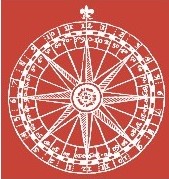Malocchio in Nino Ricci’s Lives Of The Saints
The evil eye or malocchio has appeared in the works of a number of Italian-Canadian writers but for most its role has been limited. In Lives of the Saints, however, the first volume of the trilogy of the same name by Nino Ricci, its role is…
Listada em Article | publicação por grupo Iter Community
Versão 1.0 - publicado em 02 Oct 2025
Licenciado sob Creative Commons BY-NC 4.0
Descrição
The evil eye or malocchio has appeared in the works of a number of Italian-Canadian writers but for most its role has been limited. In Lives of the Saints, however, the first volume of the trilogy of the same name by Nino Ricci, its role is fundamental to the novel’s narrative construction. The central act of the novel, set in a village in southern Italy in the 1960s, is the snakebite received by the protagonist’s mother, Cristina, while she is engaged in adulterous intercourse. She becomes pregnant as a result of this encounter and is ostracised by the villagers who intepret her condition as the consequence of the evil eye, lu malocchiu. The evil eye becomes a symbol of the pain and violence of the behavioural rules and boundaries imposed on women’s flesh. Ricci, the most successful Italian-Canadian author of his generation, uses the concept of malocchio to unmask the implications of traditional patriotic and nostalgic narratives based on women’s sexuality, and eventually to construct a complex narrative of the Italian-Canadian post-migrant experience.
Cite este trabalho
Pesquisadores devem citar este trabalho da seguinte forma:
Tags
Notas
Original publication: Baldo, Michela. "Malocchio in Nino Ricci’s Lives Of The Saints." Quaderni d'italianistica 33 (1): 2012. 37-60. DOI: 10.33137/q.i..v33i1.17087. This material has been re-published in an unmodified form on the Canadian HSS Commons with the permission of Iter Canada / Quaderni d'italianistica. Copyright © the author(s). Their work is distributed by Quaderni d'italianistica under a Creative Commons Attribution-NonCommercial 4.0 International License. For details, see https://creativecommons.org/licenses/.
Pré-visualização da publicação
Iter Community
This publication belongs to the Iter Community group.
When watching a publication, you will be notified when a new version is released.
